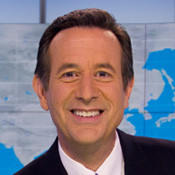What does returning home after being incarcerated feel like?
Returning home from prison can pose significant challenges. According to research by the Prison Policy Initiative, individuals with a history of incarceration are ten times more likely to face homelessness. Moreover, for marginalized groups such as people of color and women, the obstacles are often amplified. What potential positive transformations can arise from this journey?
What is the remedy to hopelessness?
According to the FBI, there are about 33,000 street gangs in the U.S. today, ruthless and on the rise, recruiting kids as young as 10.
“My teacher was really rude. And one day he caught me cheating on his spelling test and he just embarrassed me. So I started joining the drug game at nine. That’s how hopelessness grabs you.”, said Antonio Fernandez, founder and CEO of “Grow up Grow Out.”
Antonio Fernandez is a former leader of the notorious Latin Kings gang. His story is a stark warning to youth, yet also a powerful testament to redemption and second chances.
The Red Line
St. Louis, formerly among the largest cities in the United States, now faces a stark decline. Once bustling with a population nearing a million and thriving industries, the city now grapples with poverty, crime, and violence.
Adding to the city’s woes is the entrenched segregation fueled by the Delmar Divide. Delmar Boulevard acts as a dividing line, with the city’s wealth, resources, and White population predominantly concentrated to the South.
The Value of Second Chances
Courtney Stewart spent his formative years navigating the challenges of a drug-ridden neighborhood in Washington D.C., all while contending with parents battling alcoholism.
“If we paid our debt, we should be welcomed back to our community. We have to go and pay for the mistakes that we made then we come home”. Said Courtney Stewart during this Full Frame episode.
Having experienced incarceration himself, he has since dedicated his life to championing the cause of individuals seeking reintegration into society. Today, he leads the National Reentry Network for Returning Citizens, tirelessly advocating for their rights and opportunities.
 CGTN America
CGTN America

